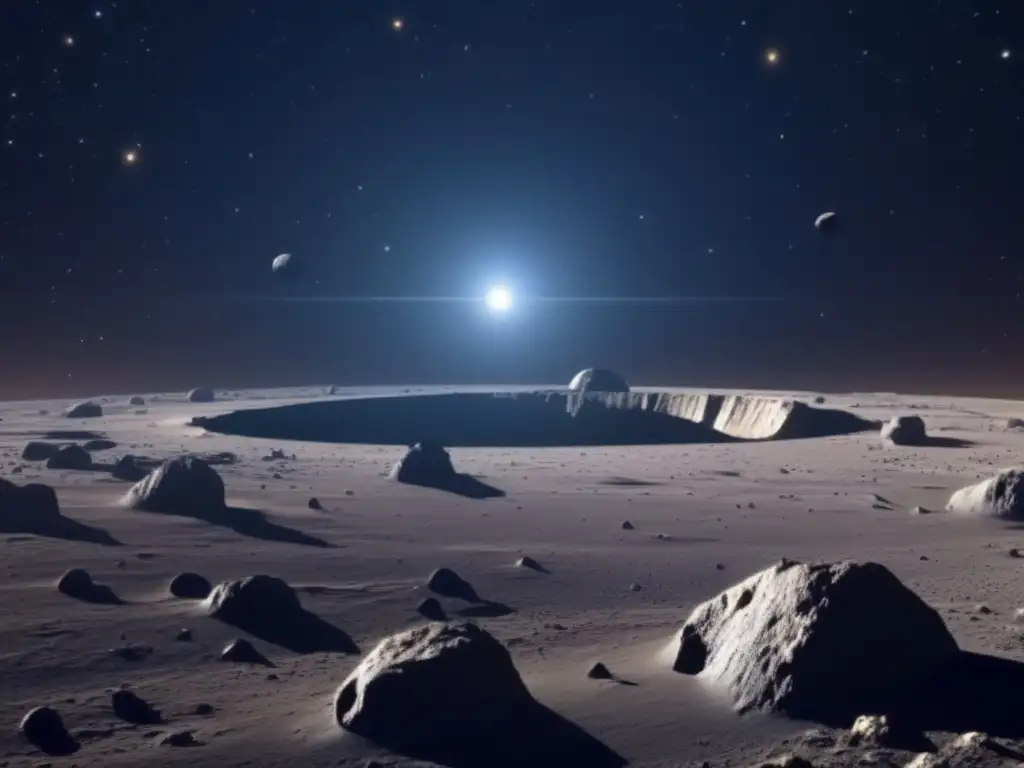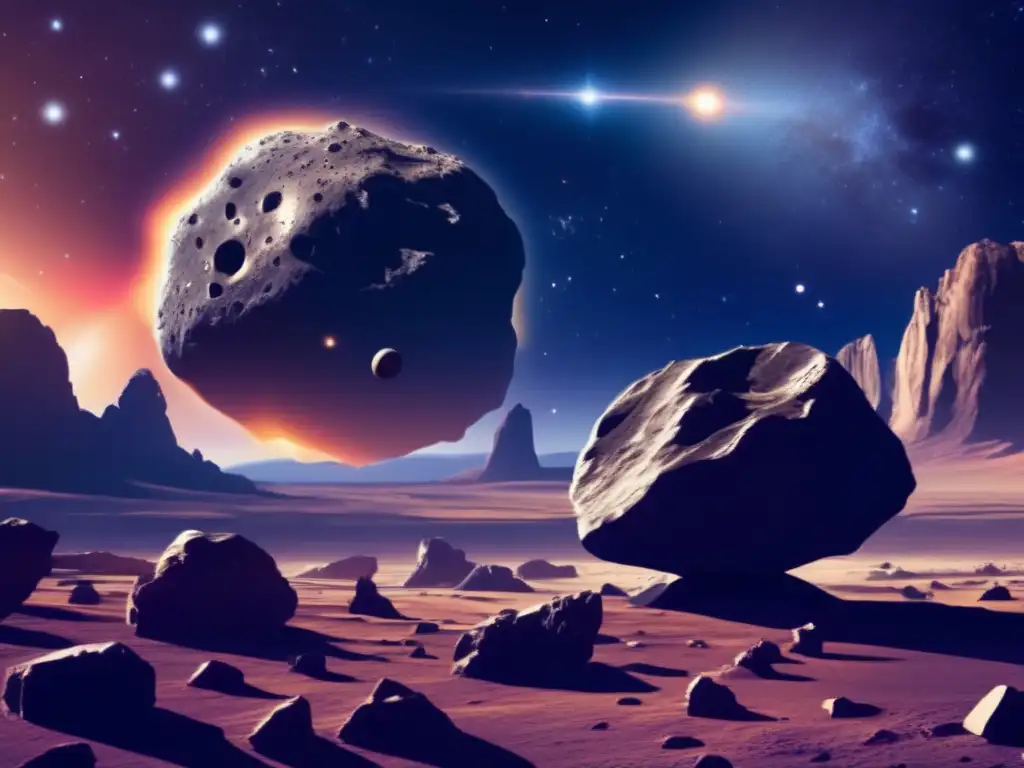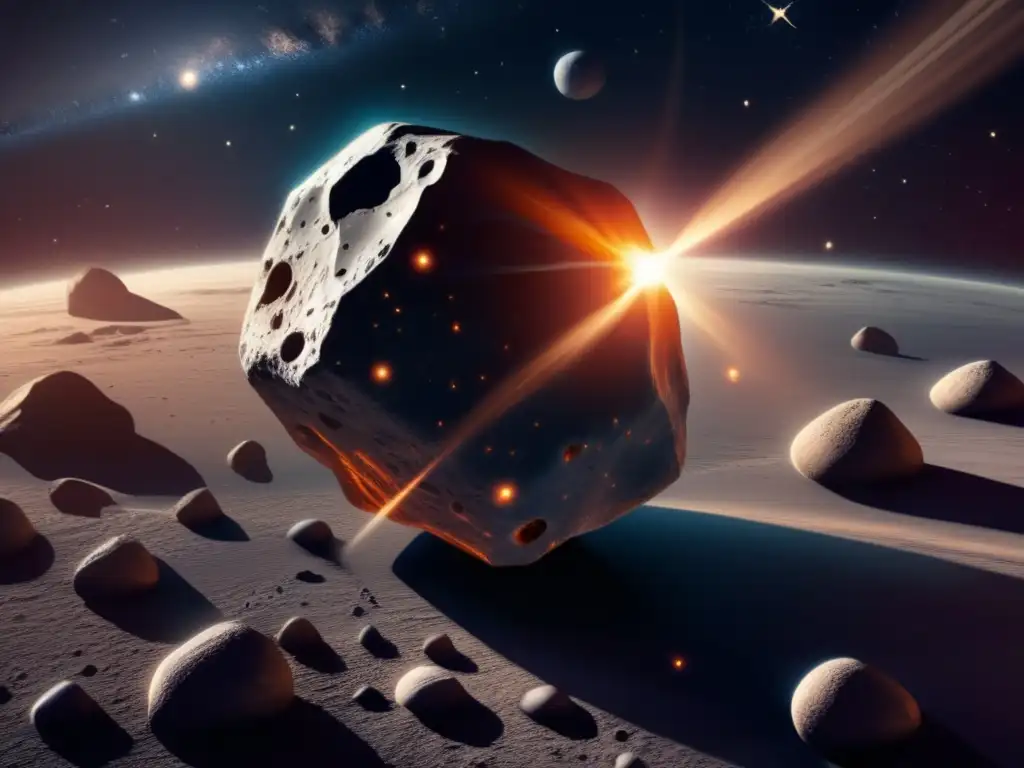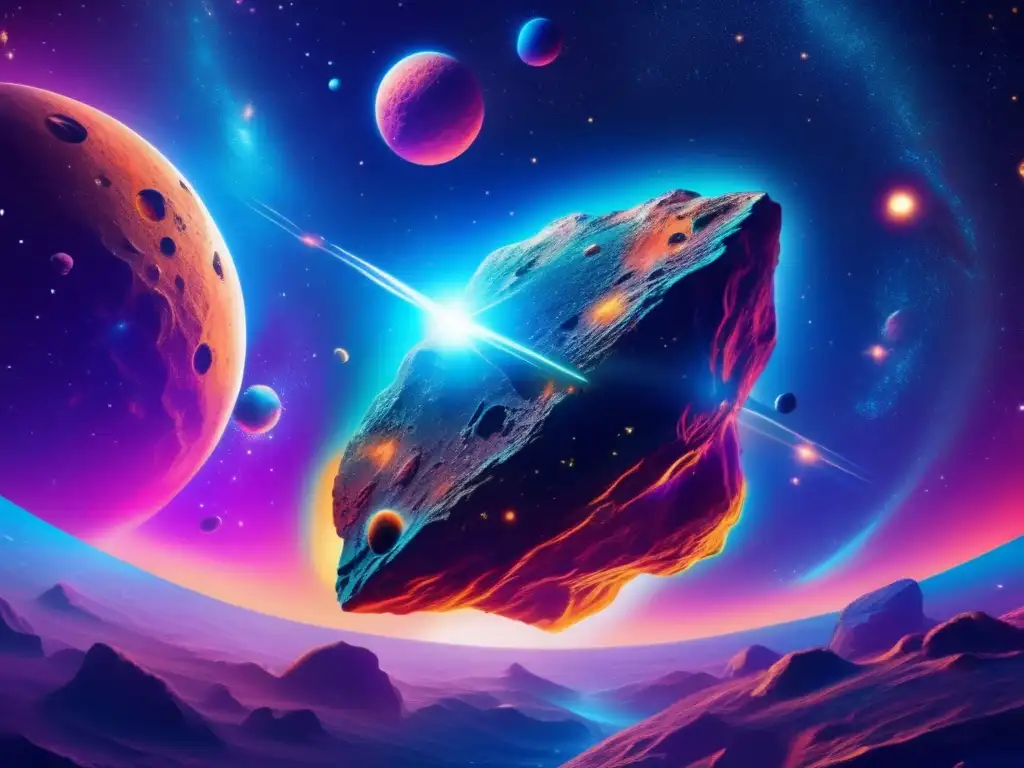Asteroid Mnemosyne: A Journey Into Its Past

Introduction
Asteroids have long fascinated scientists and astronomers due to their mysterious nature and potential impact on the Earth. One such intriguing asteroid is Mnemosyne, named after the Greek goddess of memory. In this article, we will delve into the fascinating history and significance of Asteroid Mnemosyne, exploring its composition, discovery, and its role in our understanding of the solar system.
Composition and Characteristics

Discovery
Asteroid Mnemosyne was discovered on September 22, 1859, by astronomer Robert Luther at the Düsseldorf Observatory in Germany. It was one of the first asteroids to be identified and cataloged, with the official designation 57 Mnemosyne. Luther named the asteroid after Mnemosyne, the Titaness of memory in Greek mythology.
Physical Properties
Mnemosyne belongs to the Flora family of asteroids, which reside within the inner region of the asteroid belt between Mars and Jupiter. It has an estimated diameter of approximately 108 kilometers (67 miles), making it one of the larger asteroids in the belt. The composition of Mnemosyne is believed to be primarily silicate rock, similar to other typical asteroids.
Orbit and Rotation
Asteroid Mnemosyne follows an elliptical orbit around the Sun, with an average distance of about 2.2 astronomical units (AU). Its orbital period is approximately 3.4 years, and its rotation period remains unknown.
Scientific Significance

Exploration Missions
Although no dedicated exploration missions have been launched specifically to study Mnemosyne, data from various telescopic observations have provided valuable insights into its physical characteristics. Scientists continue to monitor the asteroid, gathering information on its composition, shape, and potential impact risks.
Impact Hazard
As with many other asteroids, understanding the potential impact of Mnemosyne on Earth is of great importance. While Mnemosyne's orbit does not currently pose a significant threat, continued monitoring is crucial for identifying any future changes in its trajectory.
Scientific Research
Mnemosyne's composition and structure offer scientists valuable opportunities for studying the early stages of our solar system's formation. By analyzing the asteroid's composition, researchers can gather insights into the processes that shaped our celestial neighborhood billions of years ago.
Asteroid Mnemosyne in Mythology

Goddess of Memory
In Greek mythology, Mnemosyne was one of the Titans and the mother of the nine Muses. She was regarded as the personification of memory and remembrance. Mnemosyne played a crucial role in preserving the collective knowledge and history of the universe.
Cultural Significance
The naming of Asteroid Mnemosyne after the Greek goddess reflects the significance of memory and preservation in human culture. It serves as a reminder of our collective past and the importance of remembering and learning from history.
Historical Beliefs
Ancient civilizations often associated celestial bodies with mythical deities, attributing various powers and significance to them. The naming of asteroids after mythological figures allows us to connect with ancient beliefs and appreciate the cultural impact of these celestial objects.
Frequently Asked Questions

-
What is the significance of the name Mnemosyne?
Mnemosyne was named after the Greek goddess of memory, highlighting the importance of memory and remembrance in our understanding of the universe.
-
How large is Asteroid Mnemosyne?
Asteroid Mnemosyne has an estimated diameter of approximately 108 kilometers (67 miles), making it one of the larger asteroids in the belt.
-
Is Asteroid Mnemosyne a potential threat to Earth?
Currently, Mnemosyne's orbit does not pose a significant threat to Earth. However, continued monitoring is necessary to identify any potential future changes in its trajectory.
-
Are there any exploration missions planned for Mnemosyne?
As of now, there are no dedicated exploration missions planned specifically for Mnemosyne. However, data from telescopic observations continue to provide valuable insights into its characteristics.
-
What can we learn from studying Asteroid Mnemosyne?
Studying the composition and structure of Mnemosyne allows scientists to gain insights into the early stages of our solar system's formation and better understand the processes that shaped our celestial neighborhood billions of years ago.
Conclusion
Asteroid Mnemosyne serves as a fascinating subject of study, both in terms of its physical characteristics and its mythological significance as the embodiment of memory. Through ongoing research, scientists continue to deepen our understanding of this celestial object, uncovering clues about the early history of our solar system. As we explore further into the realm of asteroids, the knowledge gained from Mnemosyne and other similar objects will contribute to our broader understanding of the universe.
We encourage readers to share their thoughts and insights in the comments section below, and to actively engage with www.asteroidrealm.com by subscribing, sharing this article on social networks, and participating in the community. Thank you for joining us on this journey into the captivating world of asteroids!
Additional Resources

For further reading on asteroids and related topics, you may find the following resources helpful:
- Book: "Asteroids: Their Nature and Utilization" by John S. Lewis
- Scientific Paper: "Composition, Mineralogy, and Porosity of Asteroids" by Lucy F. Lim et al.
- Website: NASA's Near-Earth Object Program - Asteroids and Comets
 Discovering The Story Of Asteroid Amphitrite
Discovering The Story Of Asteroid Amphitrite A Detailed Look At Asteroid Beatrix
A Detailed Look At Asteroid Beatrix Exploring The History Of Asteroid Laetitia
Exploring The History Of Asteroid LaetitiaIf you want to discover more articles similar to Asteroid Mnemosyne: A Journey Into Its Past, you can visit the Asteroid Profiles category.
Leave a Reply

Articulos relacionados: